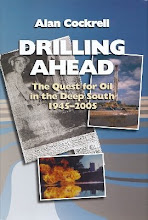We encountered icing in the clouds and later had to circumnavigate a thunderstorm system north of Los Angeles. Then we received a complicated reroute to re-enter the arrival procedure. That took some pecking at the navigation keyboard and a lot of double checking to make sure we didn’t screw it up.
The visibility at LAX was down to 300 feet, so we briefed up a CAT III ILS autoland. When the vis is below 1200 feet we have to let the jet make its own landing. The rationale is it can “see” ahead of us, whereas we cannot, and it make corrections faster. At 300 feet visibility you’ve got about 5 seconds to make a landing at the point of fog breakout.
Busy flight, huh? Read on.
While we were getting ready for the CAT III a fire broke out in the forward cargo bay. Red lights and warning bells went off like the Fourth of July. But calm and steady aviators we were, we didn’t panic. I followed rule number 1 in an emergency: Fly the plane. Skipping this rule gets more pilots killed than any other. The F/O executed the checklist and fired the forward compartment fire bottle. I knew Palmdale airport was nearby and had relatively good weather so we declared an emergency and headed for it at the speed of heat.
We told the flight attendants to prepare the cabin for evacuation and requested fire fighting and rescue equipment meet us. A small airplane at Palmdale threatened to force us to go-around, which we simply couldn’t do with a fire on board. It didn’t interfere but it was a distraction. On final approach the F/O fired the second bottle, as is required, but the smoke light remained on. We broke out at about a mile and landed.
I stopped as soon as I could, set the brakes and ordered an evacuation. We executed it flawlessly.
A voice sounded from behind us. “Great job, guys. Let’s get out of here.”
The examiner shut off the simulator and debriefed us. We walked out into a warm Colorado sun and headed home. Another 9-month proficiency check done. Ah, yes. A few days off and back to the real world.
In a previous post I showed you a video of a plane coming straight at us, a bit higher, pulling a contrail. Here's one of a jet ahead and we are flying alongside his contrail. We avoid getting into it because of turbulence. Pretty cool, huh? I do work in a neat office.



